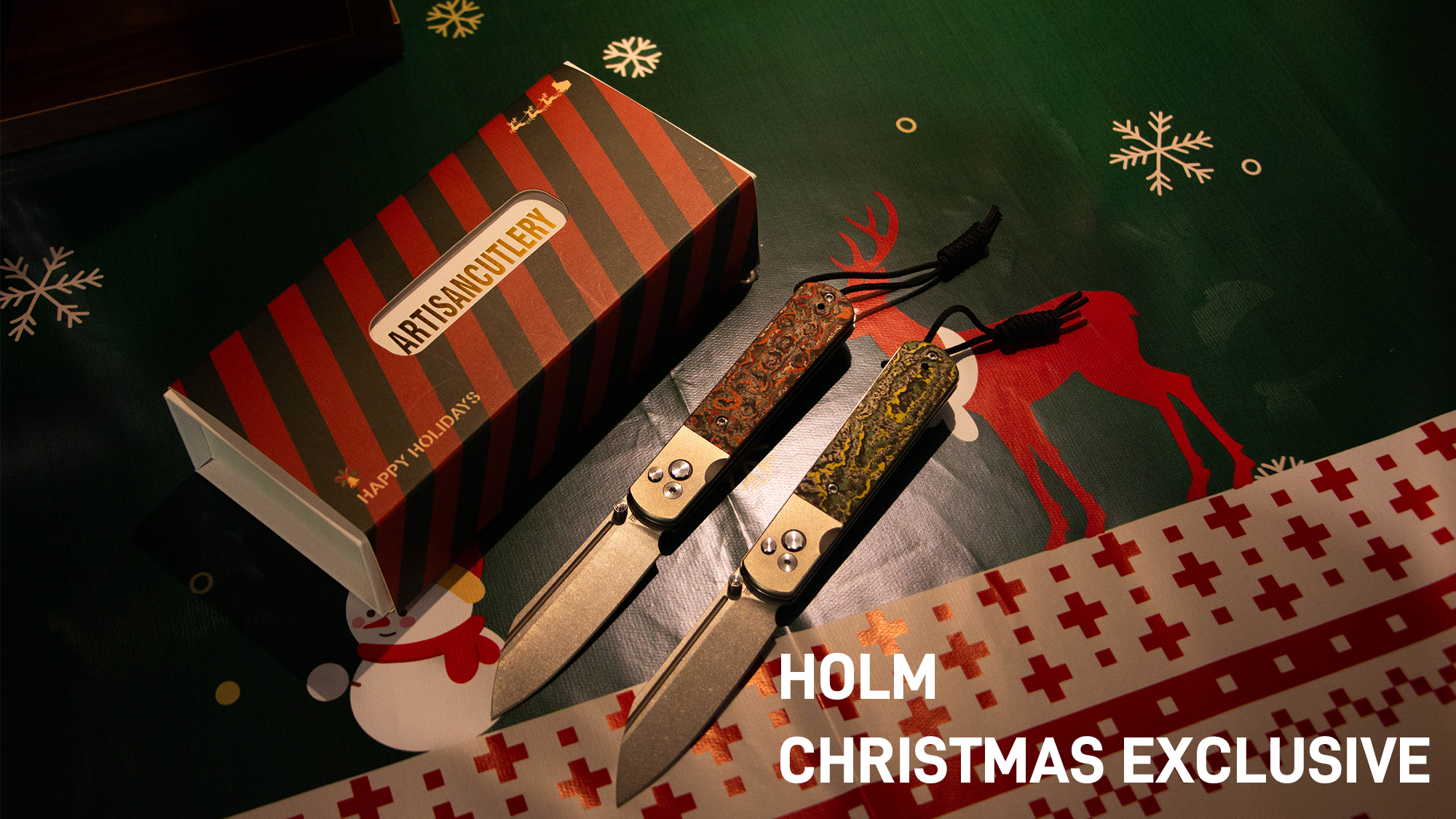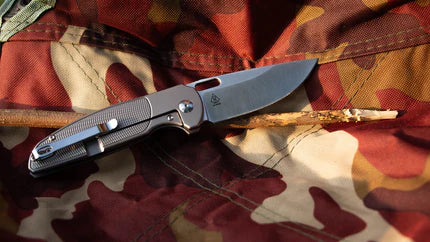Have you ever found it odd that certain knives appear to glide through food while others call for more effort? Often, the secret is found in the edge angle of the knife. Knowing knife angles will improve your cutting technique and enable you to better preserve your blades.
What Are Knife Angles?
A knife angle refers to the degree at which a knife's edge is ground relative to the centerline of the blade. Imagine slicing a cone lengthwise - the resulting angle between the two sides is what we call the knife angle. There are two main types of bevels (the surface that's been ground to create the edge):
- Single bevel knives are like a ramp leading up to the edge from one side only, while the other side remains flat. You'll often find this style in traditional Japanese knives. For example, a yanagiba (sashimi knife) typically has a single bevel that allows for incredibly precise cuts through delicate fish.
- Double bevel knives, more common in Western kitchens, have edges ground on both sides. Your typical chef's knife probably has this configuration, making it more versatile for various cutting tasks.
How Do Knife Angles Affect Cutting Performance?
The angle of a knife is very important for how well it cuts. Depending on the angle at which the blade is sharpened, it can have a big effect on how well it cuts, how long it lasts, and how sharp it is overall. Let's look into these effects in more depth.
Knife Sharpness Influences Cutting Precision
Knives with sharper angles (around 10 to 20 degrees) create a finer edge that allows for clean and precise cuts. This sharpness is ideal for tasks requiring finesse, such as slicing through delicate ingredients like fish or tomatoes. However, these angles make the edge more fragile and prone to chipping or dulling, especially when used on tougher materials.
Knives with wider angles (22 to 30 degrees) are less sharp but provide a sturdier edge that can withstand heavy use. These angles are better suited for tasks involving harder foods or rugged applications, such as chopping root vegetables or cutting through bones. They maintain their edge over time due to increased material behind the edge, making them easier to sharpen less frequently.

Edge Angles Affect Knife Lifespan
A bigger edge angle makes the knife last longer by protecting it from damage caused by impact and wear. This is especially important for knives that are used in professional kitchens or outside, where they will be exposed to rough circumstances. Lower-angle knives tend to lose their edge quickly and need to be sharpened more often. On the other hand, those with higher angles might keep their edge longer, but they might not be as good for making precise cuts.
Optimal Knife Angles Enhance Cutting Efficiency
For optimal results, different cutting jobs need different angles:
- Precision Cuts: For jobs like filleting fish or finely chopping veggies, a lower angle ensures smooth and effortless cuts.
- Rough Cuts: When you need to chop or cut harder things, a knife with a higher angle will be able to cut through thicker materials without breaking.
The effectiveness of the cut also affects how well it works. When using a knife with a lower angle, you might need more skill to maintain the edge. On the other hand, cutting with a higher angle offers more forgiving cutting without as much technique needed.
When people know about these things, they can choose the right knife for their needs, which ensures they can get the best results when cooking or cutting other things.
What Are the Common Knife Angles and Their Applications?
Consider matching the correct tool to the right work as we explore many knife angles. Just as you wouldn't use a sledgehammer to hang a picture frame, selecting the correct knife angle for your work may make a big impact. Here is a helpful guide on typical knife angles and their ideal applications:
| Angle Range | Features | Best For | Real-World Examples |
| 10-15° | Extremely sharp but less durable | Precision cut | Sushi preparation, fruit carving |
| 15-20° | Sharp and versatile | Daily kitchen tasks | Vegetable prep, meat slicing |
| 20-25° | Balanced sharpness and durability | Heavy-duty work | Breaking down poultry, chopping herbs |
| 25-30° | Highly durable, less sharp | Outdoor tasks | Camping, bushcraft |
How to Decide the Knife Angle for Your Folding Knife
Folding knives, such as pocket knives, also have knife angles, and these angles play a significant role in their cutting performance and durability. To decide the knife angle for your folding knife, consider the below factors:

Understand Common Folding Knife Angles
There are two main angle kinds for folding knives. The first one is 15-20 degrees on each side, for a total of 30-40 degrees. This makes a very sharp edge that is great for cutting precisely. This range works well if you need to cut paper cleanly or make detailed cuts.
The second usual range is 20 to 25 degrees on each side, for a total of 40 to 50 degrees. This makes the edge stronger and better for everyday carry and outdoor use. These angles aren't quite as razor-sharp as the lower ones, but they last longer and can handle tougher jobs without breaking.
Consider the Intended Use
For light duties like opening packages or slicing fruit, a lower angle of around 15-18 degrees per side works great. But if you're using your knife outdoors or cutting harder materials, go with a higher angle between 20-25 degrees per side to ensure durability and edge retention.
Factor in Blade Material
Harder steels can maintain sharper angles (around 15 degrees) without problems, while softer steels need wider angles (20-25 degrees) to prevent edge rolling or dulling quickly.
Check Manufacturer Recommendations
Most folding knives come from the factory with roughly 20-degree angles per side, which offers a good balance between sharpness and durability. This factory angle works well for most users, but you can adjust it based on your needs. If you want a sharper edge and don't mind more frequent sharpening, go slightly lower. For more durability and less maintenance, then increase the angle a bit.
Here's a summary of folding knife angle recommendations:
| Angle Range | Use Case |
| 15–18 Degrees Per Sid | Precision cutting; light-duty tasks |
| 20–22 Degrees Per Side | General-purpose EDC knives |
| 22–25 Degrees Per Side | Heavy-duty tasks; outdoor or rugged applications |
Does Knife Angle Require Maintenance?
Yes, maintaining the knife angle is very important for making sure that it cuts well and lasts a long time. Knives' edge shape can alter the edge geometry of a knife, so the angle needs to be maintained regularly to keep the knife functioning.

How to Tell If Your Knife Angle Needs Maintenance
- The blade feels dull or needs more force to cut.
- Edge wear that isn't even or chips that can be seen.
- It's hard to get the blades sharp during sharpening because the angles aren't uniform.
How to Maintain Knife Angles for Folding Knives
- Use Consistent Sharpening Techniques: Tools like whetstones, guided sharpeners, or fixed-angle systems help maintain a consistent angle during sharpening. The "Sharpie method" is a common technique: color the edge bevel with a marker, sharpen lightly, and adjust until the marker is removed evenly along the edge.
- Regular Touch-Ups: To keep the edge of your pocket knife in good shape between full sharpenings, hone or strop it often. This keeps the blade sharp without removing too much. Fine ceramic rods or leather strops can be used to refine and polish the edge at the right angle.
- Do not over-sharpe: Only sharpen when needed, which is usually every three to four uses, or when you notice that the tool isn't working as well. Too much sharpening can make the blade thinner and make it less durable.
- Clean and Lubricate Regularly: Clean the blade and hinge points of any dirt and debris to keep them from rusting and to make sure they work smoothly. Protect the edge and any moving parts with oil to keep them from rusting and causing friction.
- Avoid Misuse: Do not use folding knives to pry, cut hard things like bones, or hit hard surfaces, as this can damage both the edge and the angle of the edge.
- Store Properly: Keep your folding knife in a sheath or drawer liner to protect the edge from dulling when not in use.
Pick the Proper Knife Angles for Your Needs
It is important for both amateurs and professionals to understand knife angles and how they affect the cutting performance. Your knives will stay sharp and useful as long as you take care of them, clean them correctly, and use them carefully. Making smart choices about knife angles will result in better results and a more enjoyable cutting experience.










Leave a comment
All comments are moderated before being published.
This site is protected by hCaptcha and the hCaptcha Privacy Policy and Terms of Service apply.